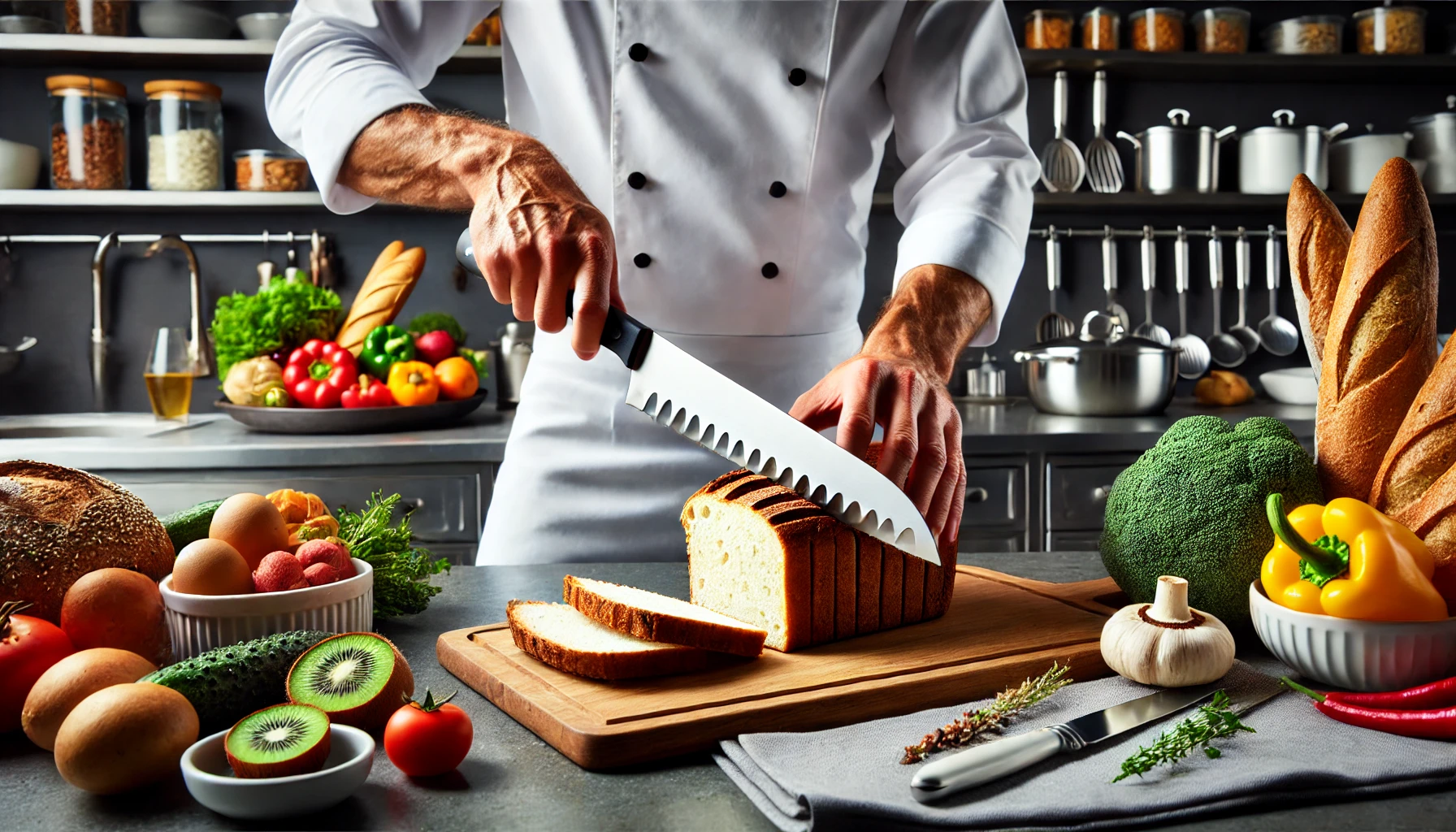A bread knife is one of the most versatile tools in any chef’s arsenal. While its name suggests it is exclusively for slicing bread, its functionality extends far beyond this singular task. Designed with a long, serrated blade, the bread knife is a key player in improving kitchen workflow, ensuring precision cuts, and saving time during meal preparation. This essential tool is not just for professional chefs; knife store benefits anyone looking to elevate their cooking experience. Let’s explore why every chef, whether professional or home-based, needs a bread knife to enhance their efficiency and precision in the kitchen.
Perfect for Slicing Bread Without Crushing It
The primary purpose of a bread knife is to slice bread efficiently without crushing or tearing it. Freshly baked bread, with its soft interior and crispy crust, can be a challenge to slice cleanly with a standard knife. A bread knife’s serrated edge grips the crust and cuts through effortlessly, preserving the loaf’s texture and appearance. This bread knife level of precision is especially important for chefs who rely on visually appealing dishes, such as artisan sandwiches or gourmet toast presentations. By using a bread knife, chefs can save time and avoid the frustration of uneven or squished slices.
Versatility Beyond Bread
A bread knife is not limited to bread alone. Its serrated design makes it ideal for cutting through a variety of foods with tough exteriors and soft interiors. From slicing delicate pastries to cutting through large fruits like melons, the bread knife offers unmatched versatility. It excels at tasks such as slicing tomatoes, which have a tender skin that often resists straight-edged knives. Similarly, it can handle soft cakes without causing them to crumble. This multi-purpose nature allows chefs to complete various tasks with one tool, streamlining their workflow and reducing the need for multiple knives.
Serrated Blades Require Less Effort
Unlike straight-edged knives, bread knives rely on a sawing motion rather than direct pressure. This design significantly reduces the effort needed to make cuts, especially with harder or more resistant surfaces. For chefs working long hours in the kitchen, this ergonomic advantage can minimize hand fatigue and improve overall efficiency. The serrated blade works well with both soft and tough textures, making it a reliable tool for quick and easy cutting. By investing in a high-quality bread knife, chefs can complete tasks faster and with less physical strain.
Enhances Cooking Precision
Precision is crucial in professional cooking, where presentation and consistency play a significant role. The bread knife’s design ensures even, clean cuts, which are essential for dishes that require uniformity. Whether slicing bread for a charcuterie board or cutting cakes into perfect layers, the bread knife delivers consistent results every time. Precision cutting also reduces food waste by ensuring that slices are uniform and usable. For chefs who take pride in their craft, a bread knife is an indispensable tool for maintaining high standards in both preparation and presentation.
Preserves Delicate Ingredients
Some ingredients, such as ripe tomatoes, soft cakes, or flaky pastries, can be easily damaged by standard knives. A bread knife’s serrated blade minimizes pressure on delicate surfaces, allowing for clean cuts without squashing or tearing. This is particularly useful for chefs who specialize in desserts or baked goods, where presentation is paramount. With a bread knife, chefs can handle fragile items with care, ensuring that their dishes look as good as they taste.
Speeds Up Kitchen Workflow
Efficiency is a key component of any successful kitchen. A bread knife’s ability to handle multiple tasks reduces the time spent switching between tools. Chefs can move seamlessly from slicing bread to cutting fruits, vegetables, or cakes without needing to change knives. This versatility simplifies meal preparation, especially in fast-paced environments where time is critical. By saving time on individual tasks, chefs can focus more on perfecting their dishes and managing other aspects of cooking.
Low Maintenance and Long-Lasting
Bread knives are known for their durability and low maintenance. The serrated edge retains its sharpness longer than straight-edged knives, reducing the frequency of sharpening. While honing a serrated blade requires special tools, the infrequent need for maintenance makes it a practical choice for busy chefs. High-quality bread knives are made from sturdy materials that resist wear and tear, ensuring they remain a reliable kitchen tool for years. This longevity makes bread knives a cost-effective investment for chefs looking to build a dependable knife collection.
Improves Safety in the Kitchen
Safety is a top priority in any kitchen, and the bread knife’s design helps minimize the risk of accidents. Its serrated edge grips the surface of food securely, reducing the likelihood of slipping. This stability is especially important when cutting tough or uneven surfaces, where a standard knife might struggle. Additionally, the sawing motion used with a bread knife is more controlled, making it safer to handle. By reducing the risk of accidents, the bread knife contributes to a safer and more efficient cooking environment.



